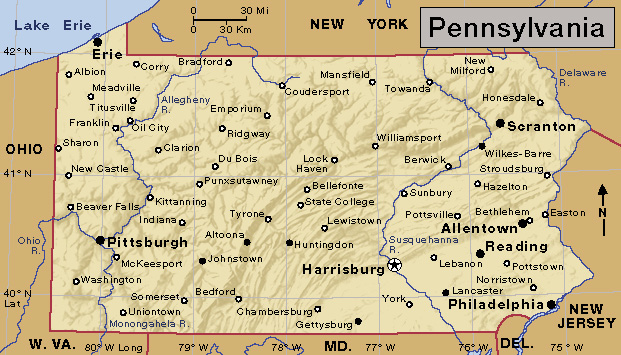Scranton (pop. 76,328) is an important manufacturing center in northeastern Pennsylvania. The city lies on the Lackawanna River in a valley of the Appalachian Mountains. The Pocono Mountains resort area is nearby. Scranton and the neighboring cities of Wilkes-Barre and Hazleton form a metropolitan area of 567,559 people.

The Scranton region’s many factories produce a variety of goods, including chocolates, machinery, military equipment, and textiles. Nay Aug Park is a large recreational area in the heart of the city. Such sites as the Steamtown National Historic Site; the Everhart Museum of Natural History, Science & Art; and Montage Mountain with its ski slope and other recreational facilities attract many visitors. Scranton is the home of Marywood University and the University of Scranton.
The first permanent settlement on the site of what is now Scranton was established in the 1780’s. Scranton became an incorporated city in 1866. It was named for George W. Scranton, who had been the chief founder of an ironworks there in 1840. The city’s iron industry used nearby deposits of anthracite (hard coal) as fuel. By 1900, coal mining had become the area’s chief economic activity. In the 1950’s, a decrease in the demand for anthracite led to the closing of many of the city’s mines. But economic development programs have attracted new businesses to the area. A downtown revitalization project in the late 1900’s centered on the construction of a new shopping complex, The Marketplace at Steamtown.
Scranton is the seat of Lackawanna County and has a mayor-council form of government.
